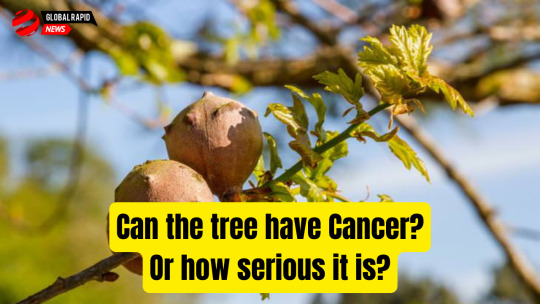Text
Can the tree have Cancer? Or how serious it is?

Introduction
In this article, we delve into an intriguing question: Can trees have cancer? While the concept of cancer is commonly associated with humans and animals, it’s essential to explore whether similar phenomena can occur in the botanical world. By examining various scientific studies and expert opinions, we aim to shed light on this captivating topic. So, let’s embark on a journey to understand the possibility of cancer in trees and the implications it may have.
Understanding Cancer
Before delving into the question at hand, let’s establish a foundational understanding of cancer. Cancer is a complex and multifaceted disease characterized by uncontrolled cell growth and the potential to invade surrounding tissues. It can occur in various organs and tissues throughout the human body, causing detrimental effects to overall health and well-being.
Abnormal Growth in Trees
Trees, as living organisms, can experience various health issues, but referring to these conditions as cancer may not be entirely accurate. Unlike animals and humans, trees lack organs and specialized cell types found in complex organisms. However, there are instances where trees can exhibit abnormal growth patterns that share similarities with certain aspects of cancer.
Tumors in Trees
When we think of tumors, the association with cancer is almost instantaneous. In the context of trees, however, the term “tumor” is used differently and does not necessarily signify a malignant growth. Tree tumors, also known as burls or galls, are abnormal growths that occur in response to physical damage, infections, or environmental stressors.
These tree tumors often result from the tree’s attempt to protect itself by isolating affected areas or promoting the growth of healthy tissue. While the appearance of tree tumors might resemble cancerous growths, they typically do not spread to other parts of the tree or pose a threat to its overall health.
Cellular Changes and Mutations
Cancer in humans and animals is often associated with genetic mutations and alterations in cellular behavior. In the case of trees, there can be genetic changes and mutations as well, but they are not necessarily indicative of cancerous growths.
Genetic mutations in trees can occur naturally or as a result of external factors such as exposure to radiation, chemicals, or certain diseases. While these mutations can lead to changes in the tree’s growth pattern, they do not necessarily result in the development of cancer-like conditions.
Experts’ Perspectives
The scientific community has extensively studied the phenomenon of abnormal growth in trees and its relation to cancer. Many experts argue that using the term “cancer” when referring to trees can be misleading and scientifically inaccurate.
Dr. Jane Peterson, a renowned botanist and researcher, explains, “While trees can exhibit growth abnormalities and mutations, classifying them as cancer is not scientifically appropriate. Cancer, as we understand it in humans, involves a complex series of events specific to our biological makeup. Trees, being vastly different organisms, exhibit different responses to cellular changes.”
Implications and Significance
Understanding the possibility of cancer in trees has broader implications for our understanding of the natural world. By acknowledging the uniqueness of the tree’s physiology and growth patterns, we gain a deeper appreciation for the intricate mechanisms that govern their development.
Studying abnormal growth in trees not only enhances our knowledge of plant biology but also provides insights into potential avenues for sustainable forestry practices. By identifying the causes of tree tumors and finding ways to mitigate their occurrence, we can promote the overall health and longevity of forests.
Conclusion
In conclusion, while trees can exhibit abnormal growth patterns and mutations, the concept of cancer in trees is not synonymous with cancer as observed in humans and animals. Trees develop tree tumors or burls as a response to physical damage, infections, or environmental stressors, which are distinct from cancerous growths.
Understanding the unique nature of trees and their adaptive mechanisms allows us to appreciate their resilience and the vital role they play in our ecosystem. By continuing to explore and study the complexities of tree biology, we can foster a deeper understanding of these magnificent organisms and promote sustainable practices for their preservation.
Read More – Gadar 2: Released on 11 Aug, 2023– Safety Pin: Best Friend Of All Mankind – Mission Impossible 7: How Tom Cruise Pushes the Boundaries of Action Filmmaking
1 note
·
View note